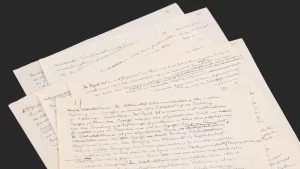An inside look at the data powering McLaren’s F1 team
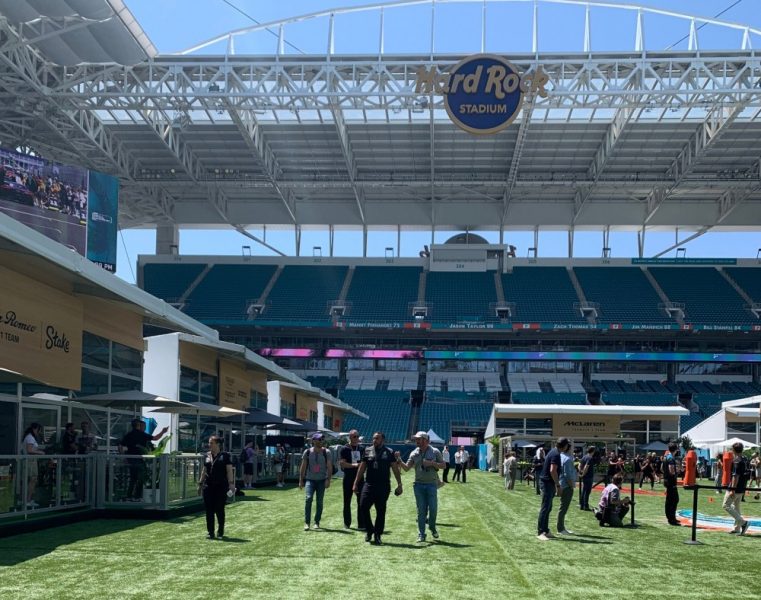
Formula 1, a 70-year old motorsport, has recently undergone a cultural renaissance. That renaissance has been fueled in large part by the growing popularity of the glitzy, melodrama-filled Netflix reality series, “Drive To Survive,” which Mercedes team principal Toto Wolff once said was closer to the fictional “Top Gun” than a documentary. Relaxed social media rules after F1 changed owners also helped provide a look into the interior lives of drivers-turned-new-age-celebrities.
As a result, there’s been an explosion of interest among US audiences, which means more eyeballs and more ticket sales. Delving into the highly technical world of F1 can be daunting, so here are the basics to know about the design of the sport—plus an inside look at the complex web of communications and computer science at work behind the scenes.
Data and a new era of F1
Increasingly, Formula 1 has become a data-driven sport; this becomes evident when you look into the garages of modern F1 teams.
“It started really around 60, 70 years ago with just a guy with a stopwatch, figuring out which was the fastest lap—to this day and age, having every car equipped with sensors that generate around 1.1 million data points each second,” says Luuk Figdor, principal sports tech advisor with Amazon Web Services (AWS), which is a technology partner for F1. “There’s a huge amount of data that’s being created, and that’s per car.” Part of AWS’ job is to put this data in a format that is understandable not only to experts, but also to viewers at home, with features like F1 Insights.
There was a time where cars had unreliable radios, and engineers could only get data on race performance at the very end. Now, things look much more different. Every car is able to send instantaneous updates on steering, G-force, speed, fuel usage, engine and tire status, gear status and much more. Around the track itself, there are more accurate ways for teams to get GPS data on the car positions, weather data, and timing data.
“This is data from certain sensors that are drilled into the track before the race and there’s also a transponder in the car,” Figdor explains. “And whenever the car passes the sensor, it sends a signal. Based on those signals you can calculate how long it took for a car to pass a certain section of the track.”
These innovations have made racing more competitive over the years, and made the margins in speed between some of the cars much closer. Fractions of seconds can divide cars coming in first or second place.
F1 101
For newbies, here’s a quick refresher on the rules of the game. Twenty international drivers from 10 teams compete for two championships: the Driver’s Championship and the Constructors’ Championship.
Pre-season testing starts in late February, and racing spans from March to November. There are 20 or so races at locations around the world, and each race is around 300 km (186 miles), which equals 50 to 70 laps (except for the Monaco circuit, which is shorter). Drivers get points for finishing high in the order—those who place 10th or below get no points. Individuals with the highest points win the Driver’s Championship, and teams with the highest points win the Constructors’ Championship.
A good car is as essential for winning as a good driver. And an assortment of engineers are crucial for ensuring that both the driver and the car are performing at their best. In addition to steering and shifting gears, drivers can control many other settings like engine power and brake balance. Races are rain or shine, but special tires are often required for wet roads. Every team is required to build certain elements of their car, including the chassis, from scratch (they are allowed to buy engines from other suppliers). The goal is to have a car with low air resistance, high speed, low fuel consumption, and good grip on the track. Most cars can reach speeds of around 200 mph. Certain engineering specifications create the downward lift needed to keep the cars on the ground.
Technical regulations from the FIA contain rules about how the cars can be built—what’s allowed and not allowed. Rules can change from season to season, and teams tend to refresh their designs each year. Every concept undergoes thorough aerodynamic and road testing, and modifications can be made during the season.
The scene backstage before a race weekend
It’s the Thursday before the second-ever Miami Grand Prix. In true Florida fashion, it’s sweltering. The imposing Hard Rock Stadium in Miami Gardens has been transformed into a temporary F1 campus in preparation for race weekend, with the race track wrapping around the central arena and its connected lots like a metal-guarded moat. Bridges take visitors in and out of the stadium. The football field that is there normally has been turned into a paddock park, where the 10 teams have erected semi-permanent buildings that act as their hubs during the week.
Setting up everything the 10 teams need ahead of the competition is a whole production. Some might even call it a type of traveling circus.
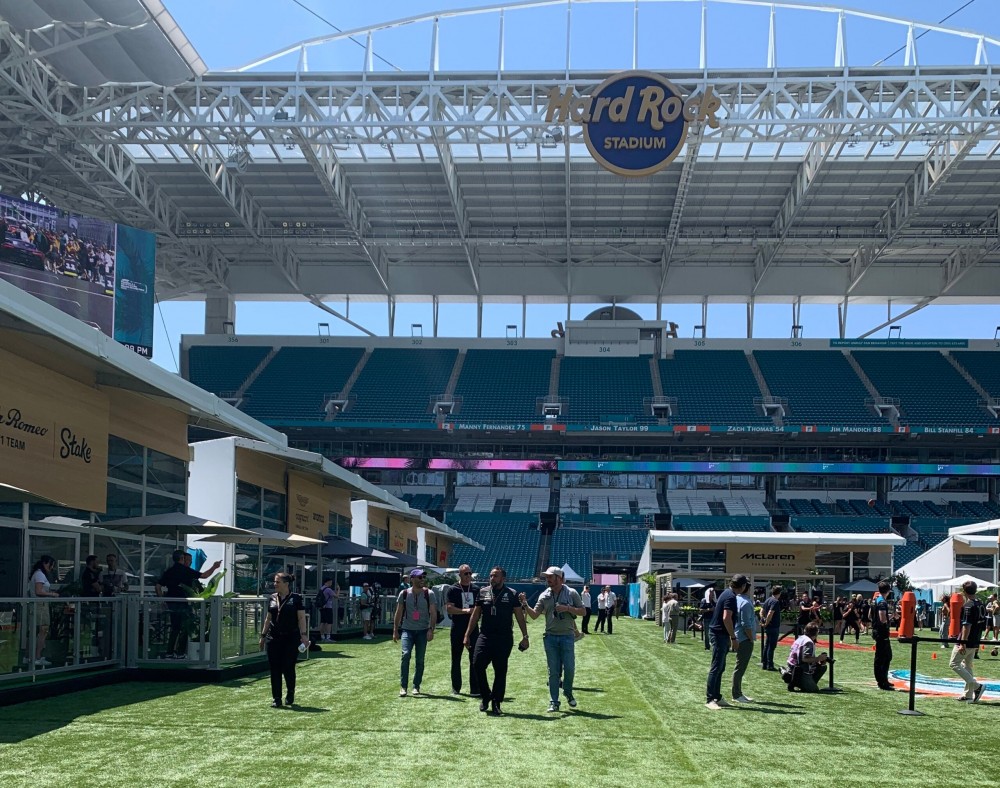
Ed Green, head of commercial technology for McLaren, greets me in the team’s temporary building in the paddock park. He’s wearing a short-sleeved polo in signature McLaren orange, as is everyone else walking around or sitting in the space. Many team members are also sporting what looks like a Fitbit, likely part of the technology partnership they have with Google. The partnership means that the team will also use Android connected devices and equipment—including phones, tablets and earbuds—as well as the different capabilities provided by Chrome.
McLaren has developed plenty of custom web applications for Formula 1. “We don’t buy off-the-shelf too much, in the past two years, a lot of our strategy has moved to be on web apps,” Green says. “We’ve developed a lot into Chrome, so the team have got really quick, instant access…so if you’re on the pit wall looking at weather data and video systems, you could take that with you on your phone, or onto the machines back in the engineering in the central stadium.”
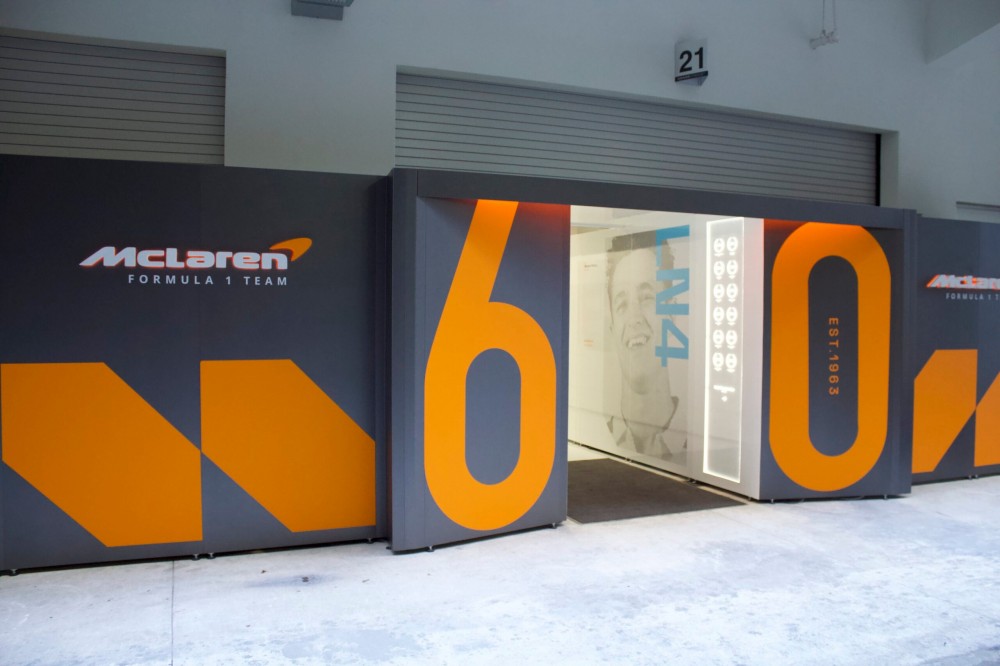
This season, there are 23 races. This structure that’s been built is their hub for flyaway races, or races that they can’t drive to from the factory. The marketing, the engineers, the team hospitality, and the drivers all share the hub. The important points in space—the paddock, garage, and race track—are linked up through fiber optic cables.
“This is sort of the furthest point from the garage that we have to keep connected on race weekend,” Green says. “They’ll be doing all the analysis of all the information, the systems, from the garage.”
To set up this infrastructure so it’s ready to transmit and receive data in time for when the cars hit the track, an early crew of IT personnel have to arrive the Saturday before to run the cabling, and get the basics in order. Then, the wider IT team arrives on Wednesday, and it’s a mad scramble to get the rest of what they need stood up so that by Thursday lunchtime, they can start running radio checks and locking everything down.
“We fly with our IT rig, and that’s because of the cost and complexity of what’s inside it. So we have to bring that to every race track with us,” says Green. The path to and from the team hub to the garages involves snaking in and out of corridors, long hallways and lobbies under the stadium. As we enter McLaren’s garage, we first come across a wall of headsets, each with a name label underneath, including the drivers and each of their race engineers. This is how members of the team stay in contact with one another.
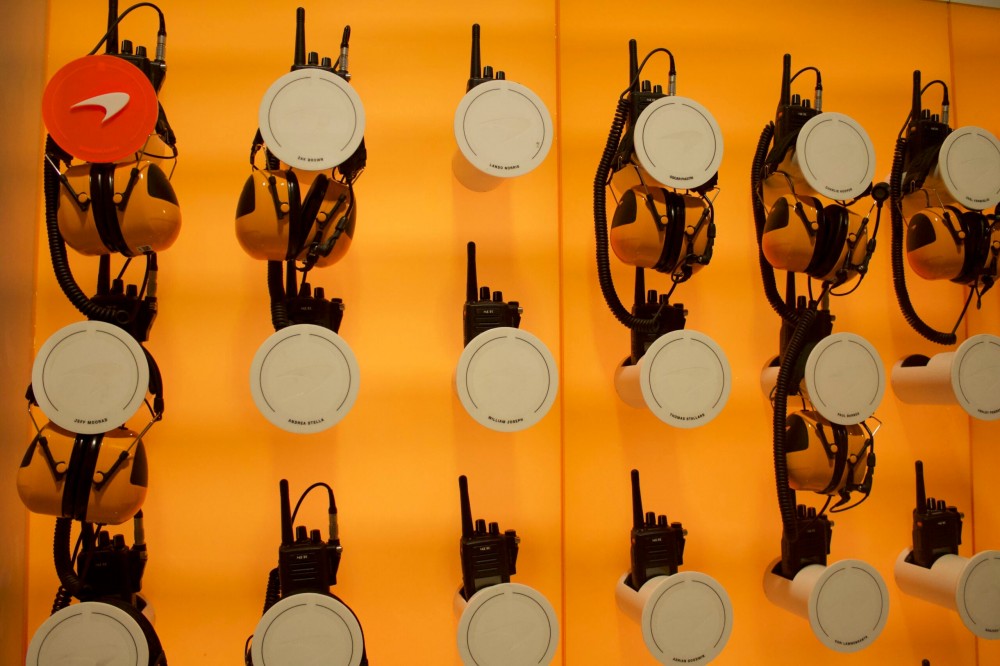
The garage, with its narrow hallway, opens in one direction into the pit. Here you can see the two cars belonging to McLaren drivers Lando Norris and Oscar Piastri being worked on by engineers, with garage doors that open onto the race track. The two cars are suspended in various states of disassembly, with mechanics examining and tweaking them like surgeons at an operating table. The noise of drilling, whirring, and miscellaneous clunking fills the space. There are screens everywhere, running numbers and charts. One screen has the local track time, a second is running a countdown clock until curfew tonight. During the race, it will post video feeds from the track and the drivers, along with social media feeds.
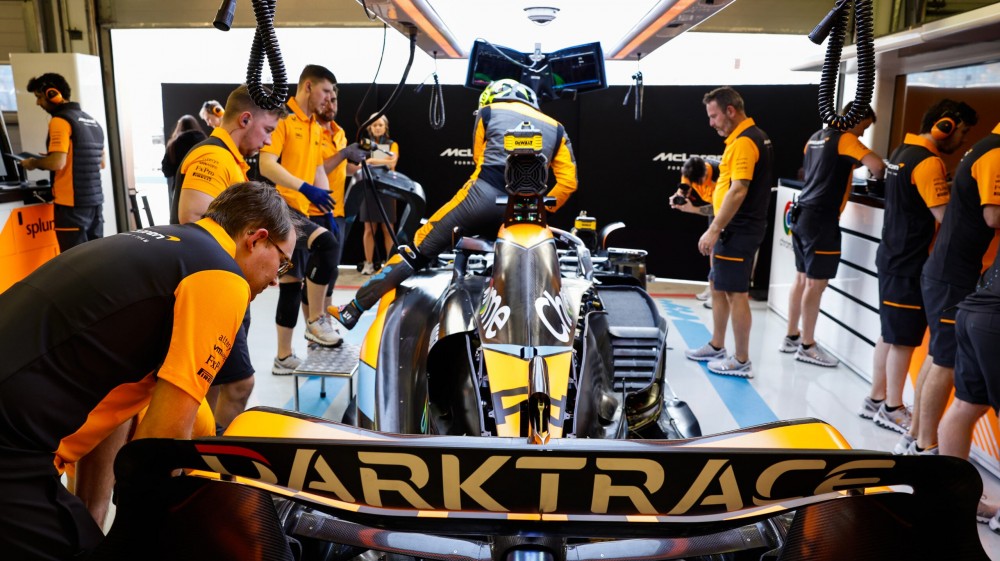
We step onto a platform viewing area overlooking the hubbub. On the platform, there are two screens: one shows the mission control room back in England, and the other shows a diagram of the race circuit as a circle. “We look at the race as a circle, and that’s because it helps us see the gaps between the cars in time,” Green says. “Looking through the x, y, z coordinates is useful but actually they bunch up in the corners. Engineers like to see gaps in distances.”
“This is sort of home away from home for the team. This is where we set up our garage and move our back office central services as well as engineering,” he notes. “We’re still in construction.”
From Miami to mission control in Woking
During race weekend, the mission control office in England, where McLaren is based, has about 32 people who are talking to the track in near real time. “We’re running just over 100 milliseconds from here in Miami back to base in Woking. They will get all the data feeds coming from these cars,” Green explains. “If you look at the team setting up the cars, you will see various sensors on the underside of the car. There’s an electronic control unit that sits under the car. It talks to us as the cars go around track. That’s regulated by the FIA. We cannot send information to the car but we can receive information from the car. Many, many years ago that wasn’t possible.”
For the Miami Grand Prix, Green estimates that McLaren will have about 300 sensors on each car for pressure taps (to measure airflow), temperature reading, speed checks across the car, and more. “There’s an enormous amount of information to be seen,” Green says. “From when we practice, start racing, to when we finish the race, we generate just about 1.5 terabytes of information from these two cars. So it’s a huge amount of information.”
Because the data comes in too quickly for any one person to handle, machine learning algorithms and neural networks in the loop help engineers spot patterns or irregularities. These software help package the information into a form that can be used to make decisions like when a car should switch tires, push up their speed, stay out, or make a pit stop.
“It’s such a data-driven sport, and everything we do is founded on data in the decision-making, making better use of digital twins, which has been part of the team for a long time,” Green says. Digital twins are virtual models of objects that are based off of scanned information. They’re useful for running simulations.
Throughout the race weekend, McLaren will run around 200 simulations to explore different scenarios such as what would happen if the safety car came out to clear debris from a crash, or if it starts raining. “We’ve got an incredibly smart team, but when you have to make a decision in three seconds, you’ve got to have human-in-the-loop technology to feed you what comes next as well,” Green says. “It’s a lot of fun.”
Improved computing resources and better simulation technology has helped change the sport as a whole too. Not only does it reduce the cost of testing design options (important because of the new cost cap rule that puts a ceiling on how much teams are allowed to spend on designing and building their cars), it also informs new rules for racing.
“One of the things pre-2022, the way that the cars were designed resulted in the fact it was really hard to follow another car closely. And this is because of the aerodynamics of the car,” Figdor says. When a car zooms down the track, it distorts the air behind it. It’s like how a speedboat disrupts the water it drives through. And if you try to follow a speedboat with another speedboat in the lake, you will find that it’s quite tricky.
“The same thing happens with Formula 1 cars,” says Figdor. “What they did in 2022 is they came up with new regulations around the design of the car that should make it easier for cars to follow each other closely on the track.”
That was possible because F1 and AWS were able to create and run realistic, and relatively fast simulations more formally called “two-car Computational Fluid Dynamics (CFD) aerodynamic simulations” that were able to measure the effects of various cars with different designs following each other in a virtual wind tunnel. “Changing regulations like that, you have to be really sure of what you’re doing. And using technology, you can just estimate many more scenarios at just a fraction of the cost,” Figdor says.
Making sure there’s not too many engineers in the garage
The pit wall bordering the race track may be the best seat in the house, but the engineering island is one of the most important. It sits inside the garage, cramped between the two cars. Engineers from both sides of the garage will have shared resources there to look at material reliability and car performance. The engineering island is connected to the pit wall and also to a stack of servers and an IT tower tucked away in a corner of the garage. The IT tower, which has 140 terabytes of storage, 4.5 terabytes of memory, 172 logical processors, and many many batteries, keeps the team in communication with the McLaren Technology Center.
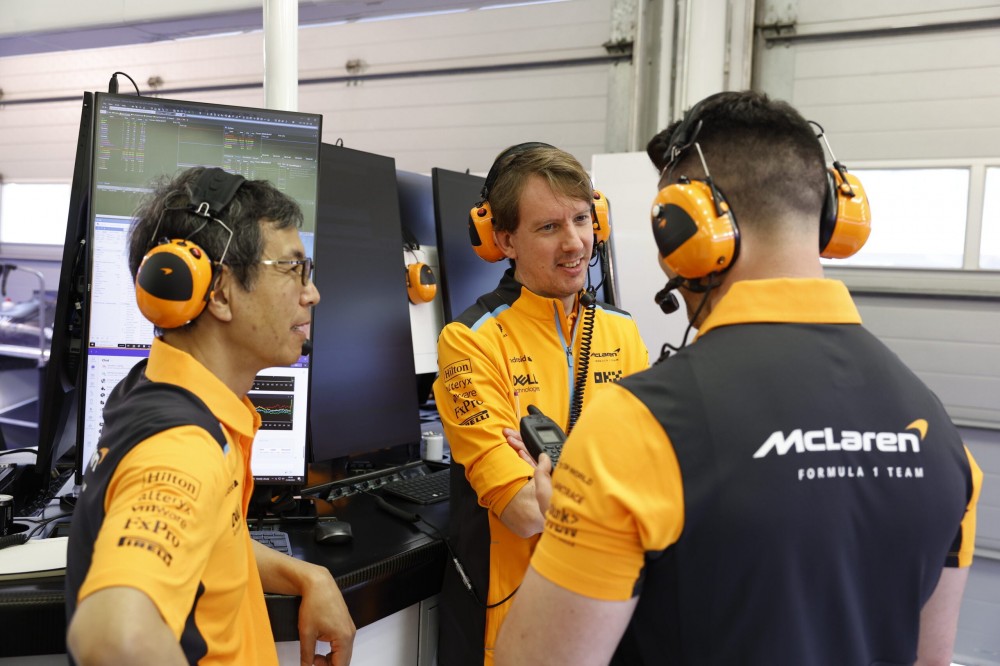
All the crew on the ground in Miami, about 80 engineers, make up around 10 percent of the McLaren team. It’s just the tip of the iceberg. The team of engineers at large work in three umbrella categories: design, build, and race.
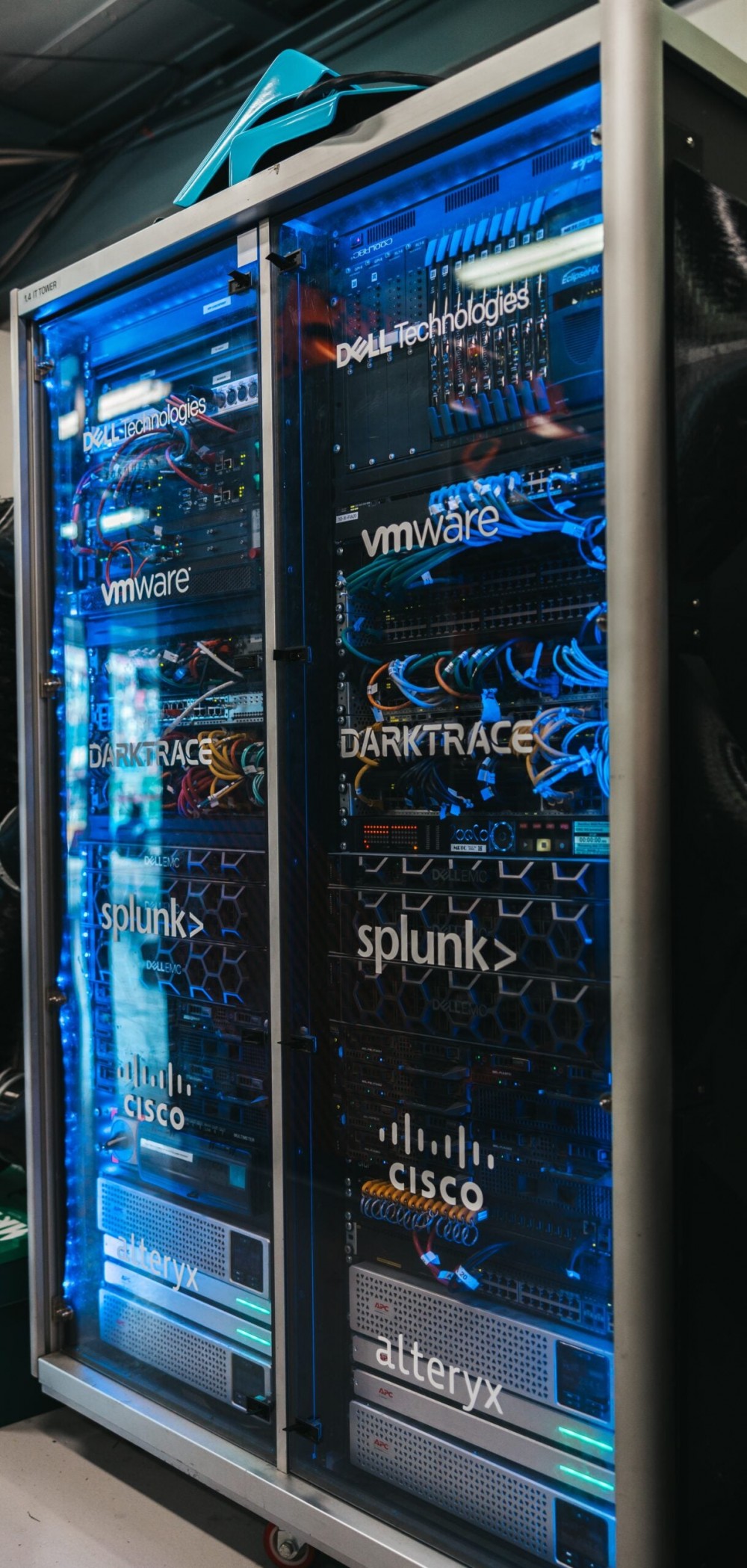
The design team will use computers to mock up parts in ways that make them lighter, more structurally sound, or give more performance. “Material design is part of that, you’ll have aerodynamicists looking at how the car’s performing,” says Green. Then, the build team will take the 3D designs, and flatten them into a pattern. They’ll bring out rolls of carbon fiber that they store in a glass chiller, cut out the pattern, laminate it, bind different parts together, and put it into a big autoclave or oven. As part of that build process, a logistics team will take that car and send it out to the racetrack and examine how it drives.
Formula 1 cars can change dramatically from the first race of the season to the last.
“If you were to do nothing to the car that wins the first race, it’s almost certain to come last at the end of the season,” Green says. “You’ve got to be constantly innovating. Probably about 18 percent of the car changed from when we launched it in February to now. And when we cross that line in Abu Dhabi, probably 80 percent of the car will change.”
There’s a rotating roster of engineers at the stadium and in the garage on different days of race week. “People have got very set disciplines and you also hear that on the radio as well. It’s the driver’s engineers that are going to listen to everything and they’re going to be aware of how the car’s set up,” Green says. “But you have some folks in aerodynamics on Friday, Saturday, particularly back in Woking. That’s so important now in modern F1—how you set the car up, the way the air is performing—so you can really over-index and make sure you’ve got more aerodynamic expertise in the room.”
The scene on Sunday
On race day, the makeup of engineers is a slightly different blend. There are more specialists focused on competitor intelligence, analysis, and strategy insight. Outside of speed, the data points they are really interested in are related to the air pressures and the air flows over the car.
“Those things are really hard to measure and a lot of energy goes into understanding that. Driver feedback is also really important, so we try to correlate that feedback here,” Green says. “The better we are at correlating the data from our virtual wind tunnel, our physical wind tunnel, the manufacturing parts, understanding how they perform on the car, the quicker we can move through the processes and get upgrades to the car. Aerodynamics is probably at the moment the key differentiator between what teams are doing.”
As technology advances, and partners work on more interesting products in-house, some of the work is sure to translate over to F1. Green says that there are some exciting upcoming projects looking at if Google could help them apply speech-to-text software to transcribe driver radios from other teams during the races—work that’s currently being done by human volunteers.



